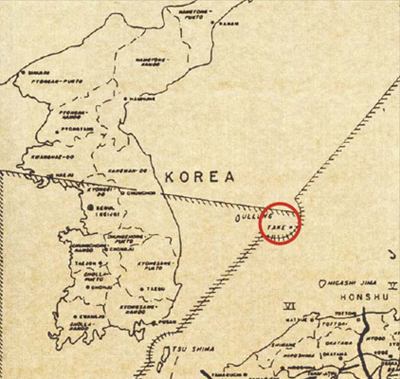- Dokdo in the East Sea
- Dokdo in History
- Dokdo is Korean Territory
Dokdo in the East Sea
Table of Contents Open Contents
- Dokdo is Korean Territory
-
Ⅰ. Roots of Territorial Claims to Dokdo
- 1. Korean Territorial Claims Proven by Japanese Historical Sources
- 2. Korean Territorial Claims Proven by Korean Historical Sources
- 3. The Japanese government’s claim that it established territorial rights over Dokdo in the mid-seventeenth century is a fabrication.
- 4. The Highest Decision-making Office in Japan’s Meiji Government Decides that Dokdo and Ulleung are Part of Korean Territory
- Ⅱ. On the declaration of territorial rights over Dokdo by the Korean government and the illegality of the island’s annexation in 1905 to Shimane Prefecture
- Ⅲ. Korea’s Territorial Rights to Dokdo Seen from Measures Taken by the Allied Powers after World War II
- Ⅳ. Korea’s Territorial Claims on Dokdo after the San Francisco Peace Treaty
- Ⅴ. Korea’s Territorial Rights over Dokdo Seen from International Law
2. The Status of Dokdo Seen from the Viewpoint of the United States Department of State and the United Kingdom

Attached maps included in SCAPIN Order No. 677In the map of the Korean Peninsula drawn according to SCAPIN Order No. 677 of the General Headquarters of the Supreme Commander for the Allied Powers, Dokdo was excluded from Japanese territory and was marked as part of Korea. The Republic of Korea began exercising its sovereign rights over Dokdo from its independence in 1948, with its territorial rights having been established after the end of World War II.


Document (Liancourt Rocks)Official document sent on October 3, 1952, by the Embassy of Japan in the United States to the United States Department of State.

Upon learning in July, 1950 that Dokdo was not clearly remarked upon in the provisions on Korean territories, the Korean government was prepared to respond but could not because the Korean War had begun in the previous month. Under these circumstances, the Korean government requested to the United States Department of State to mark Dokdo clearly as part of Korea, to which department officials refused. But the geography bureau in the Department of State stated that it required continuous research on the matter of Dokdo and always acknowledged its lack of information by adding the phrase “according to our information.”
John Foster Dulles, the Secretary of State of the United States at that time, said, “If it is true that Dokdo had been Korean territory before the Japanese government annexed it as its own in 1905, there would be little problem to include the island in the provisions of the San Francisco Peace Treaty that sets forth Japan’s handover of its rights to Korean territories.” Without in-depth investigation on the issue of Dokdo, however, the Allied Forces including the United States proceeded with the treaty in September, 1951 as they considered Japan’s participation in the anti-communist bloc more important than Korea’s territorial claims.
Since the end of World War II in 1945, there is a wealth of evidence showing that Dokdo had been Korean territory before 1905. According to a recently discovered document sent in October 1952 by the Embassy of Japan in the United States to the United States Department of State, “The U.S. Department of State investigated the history of the Liancourt Rocks [Dokdo] in several occasions previously. … The rocks have been a breeding place for sea lions and were at one time part of Joseon. The rocks were annexed to the Japanese Empire at the same time as it expanded toward Joseon. … The Japanese government considers it appropriate to claim territorial rights on the Liancourt Rocks [Dokdo]. Korea’s opposition to this is based on clear evidence.” This is proof that the United States Department of State investigated the territorial issue of Dokdo and acknowledged the sovereign rights of Korea to the island.








